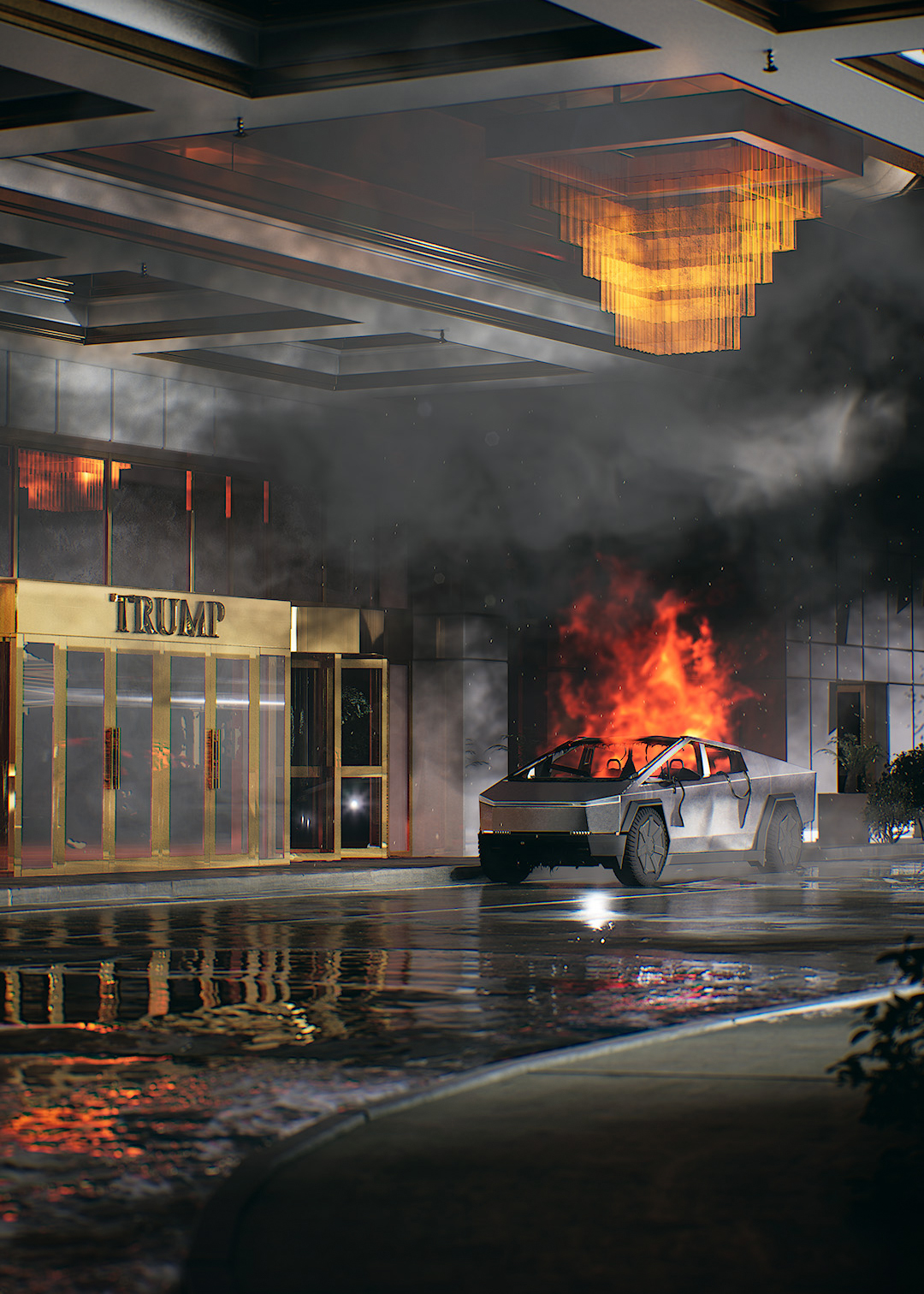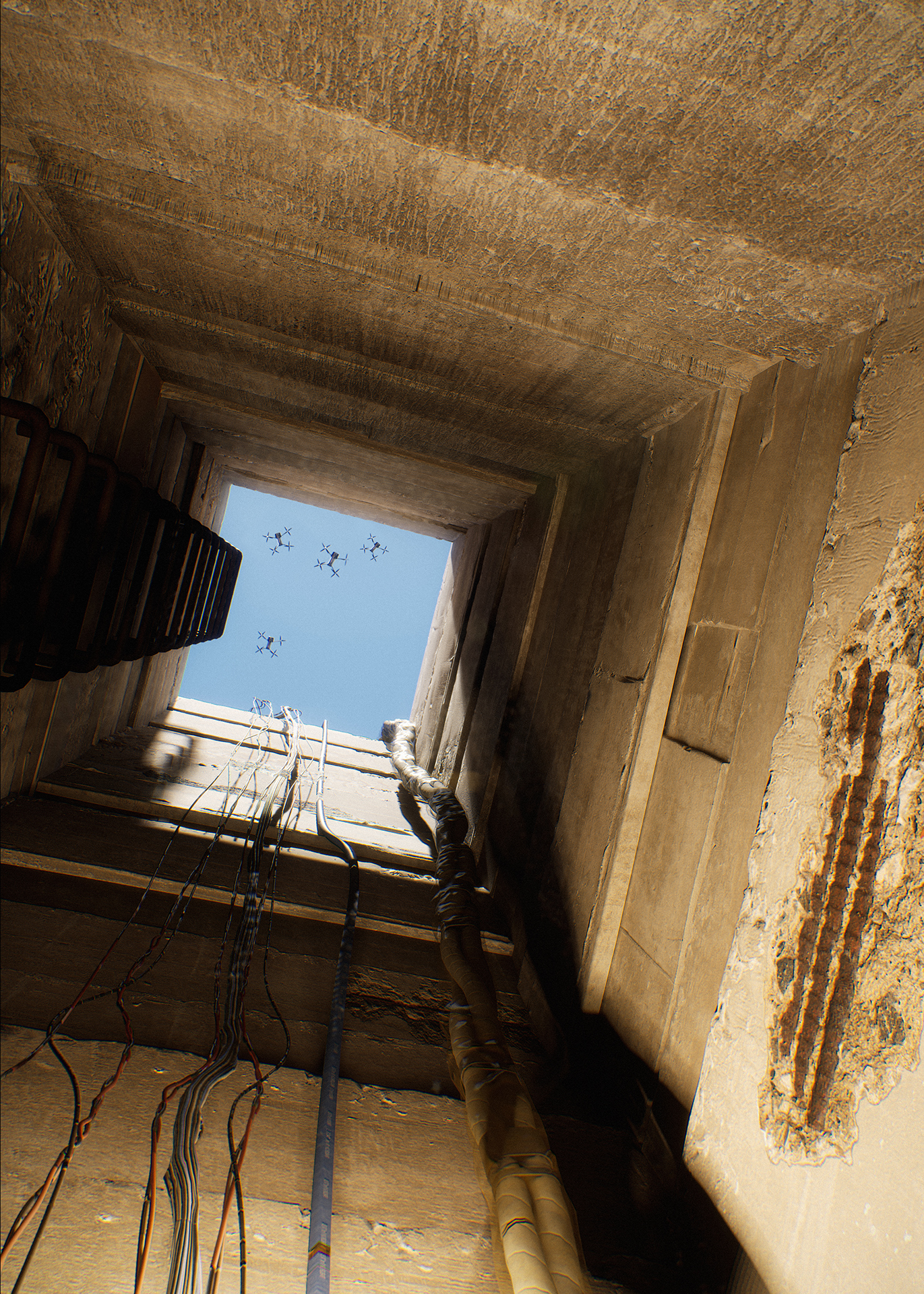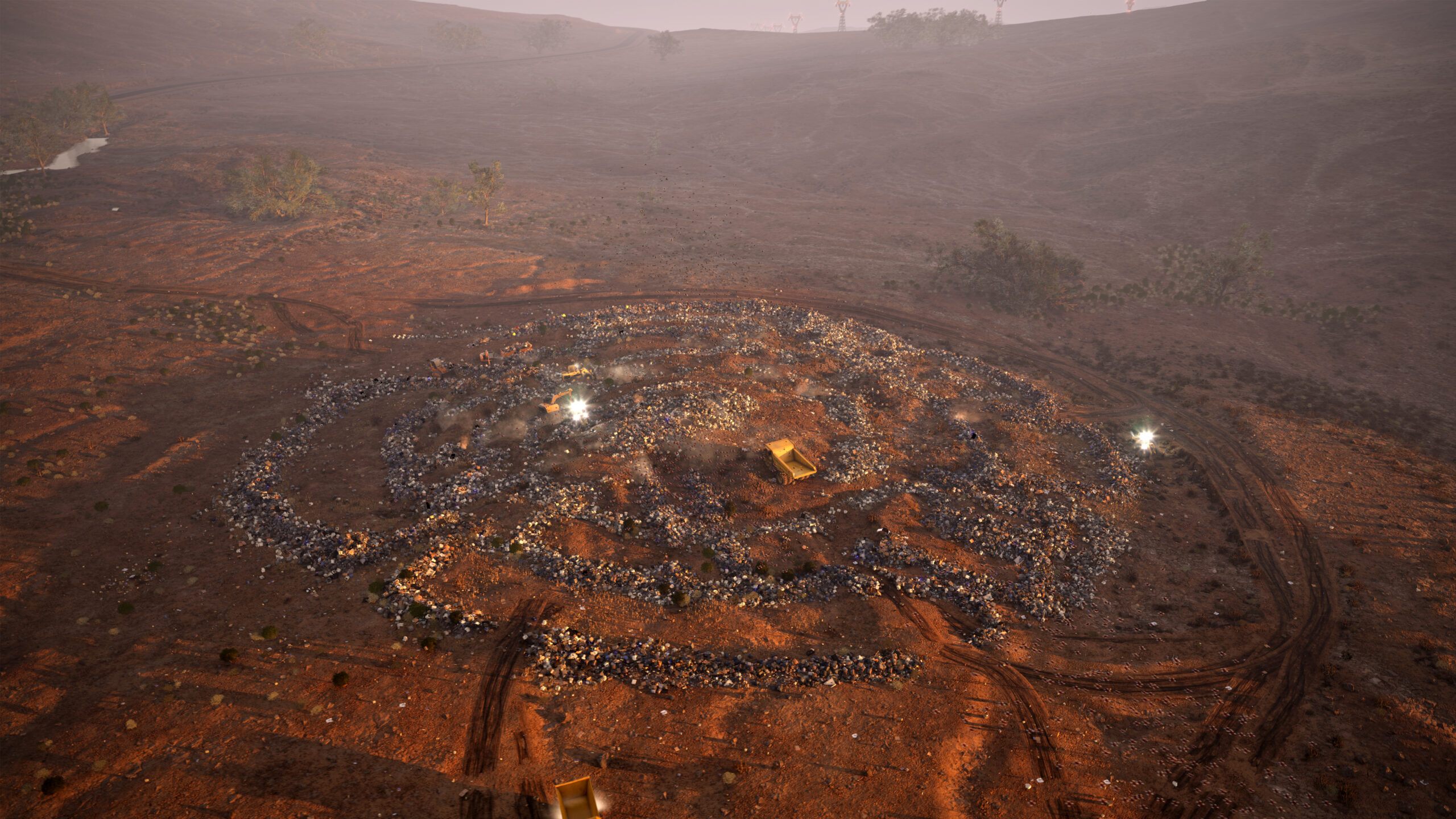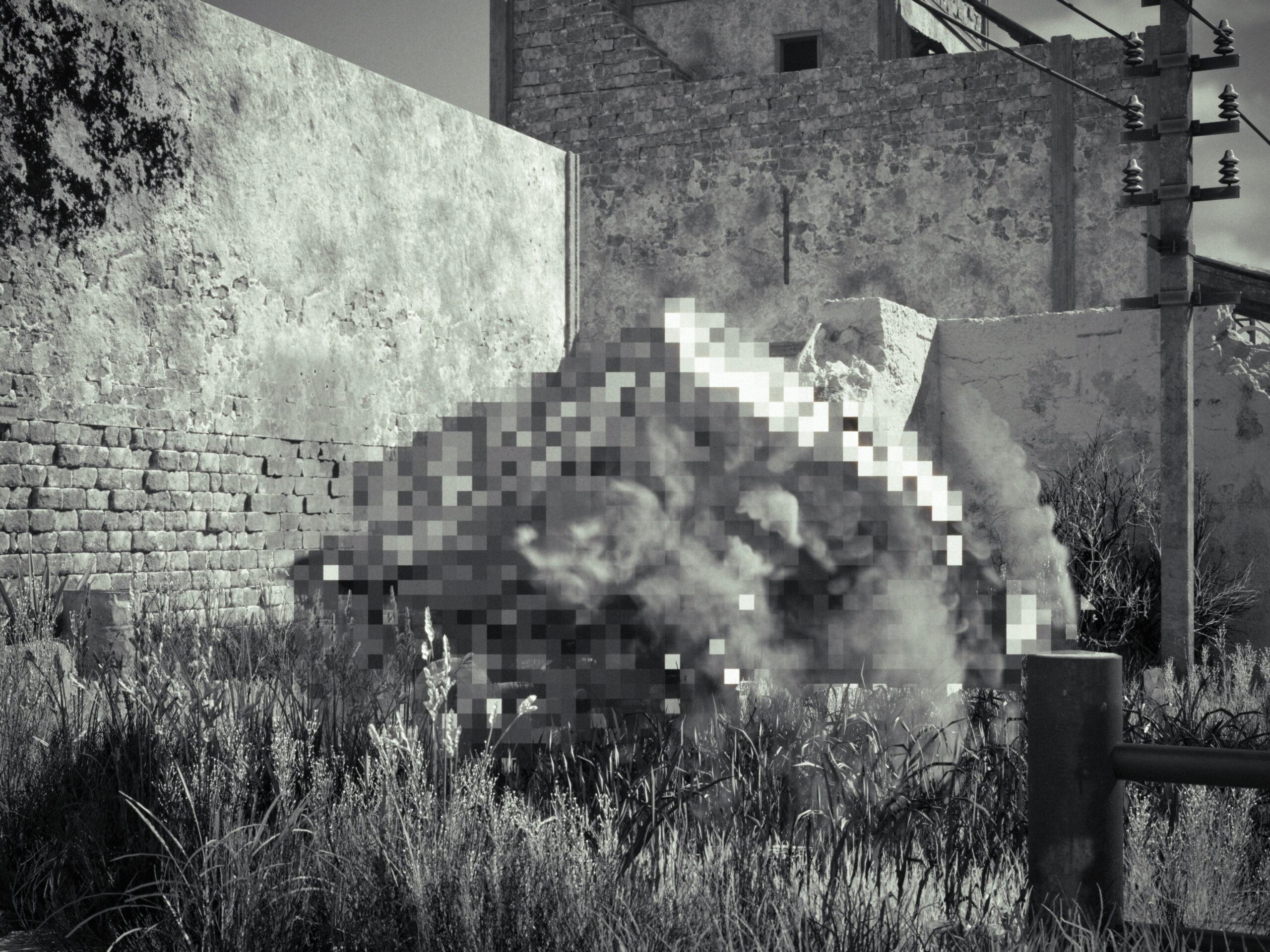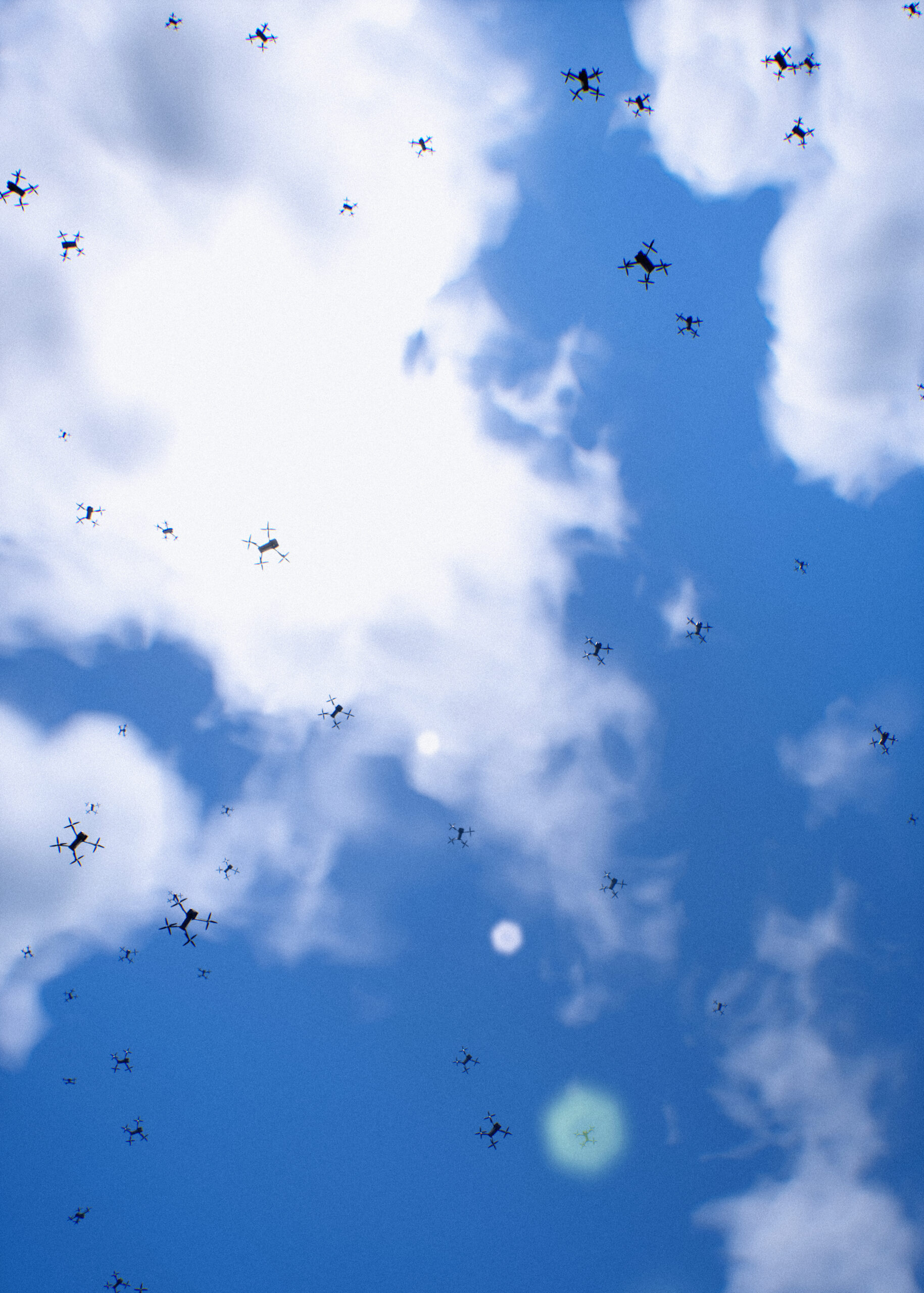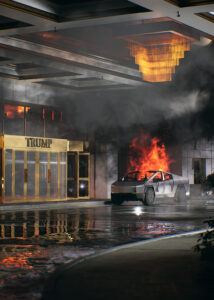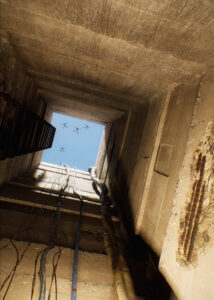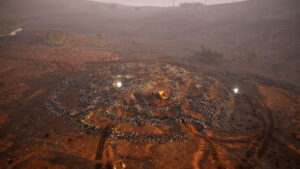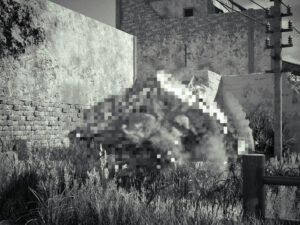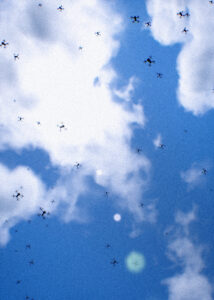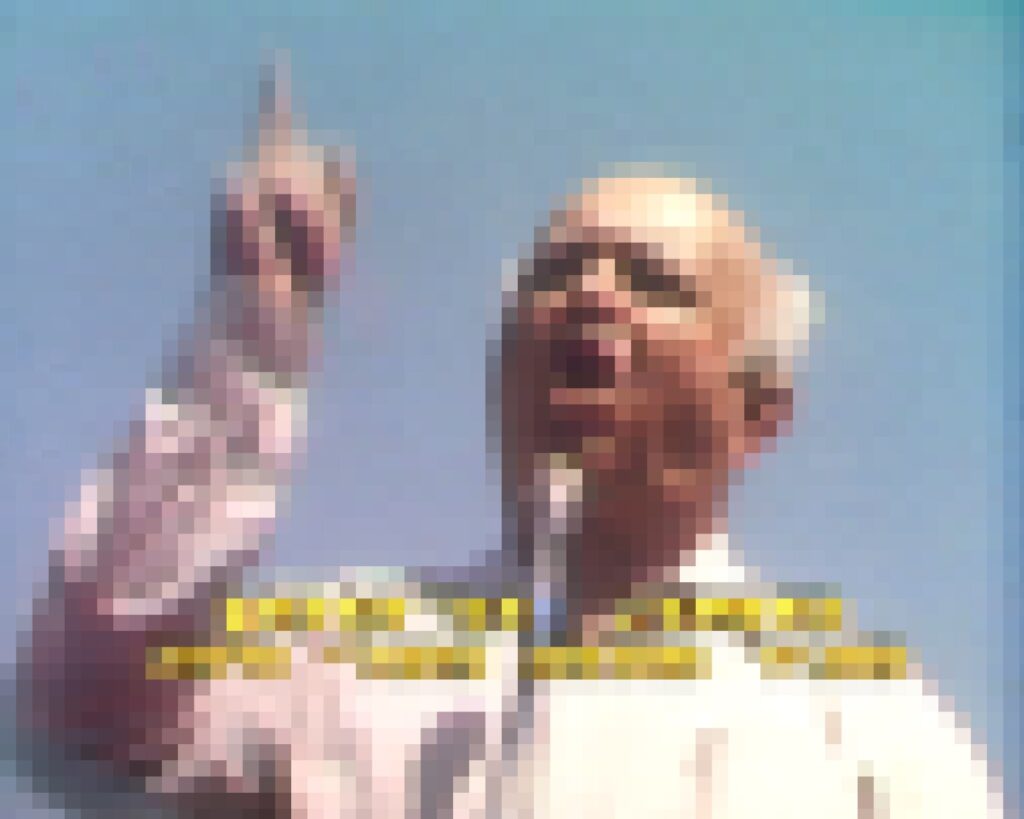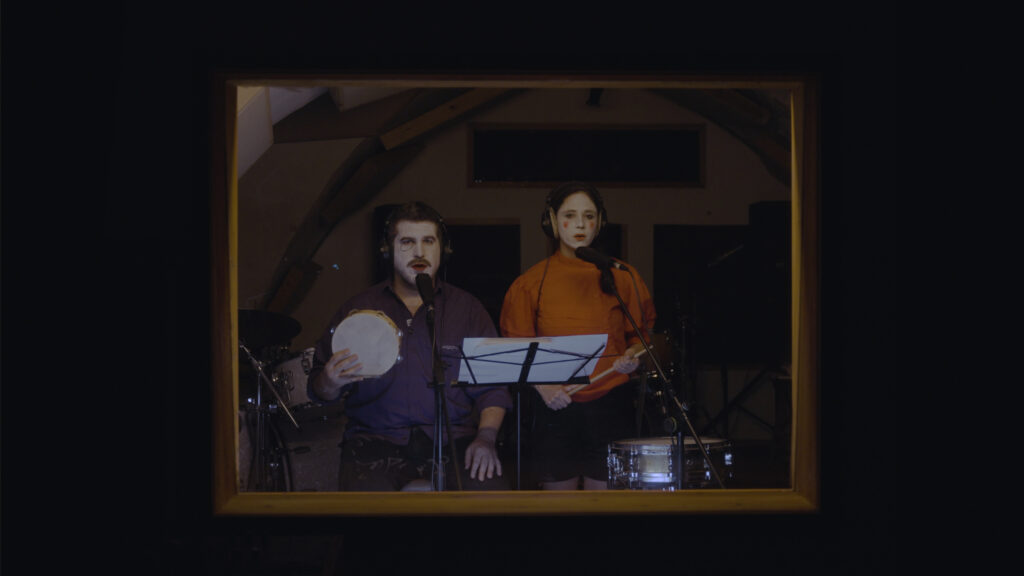Phenomenal! Alona Rodeh
Phenomenal!
Alona Rodeh
Curator: Udi Edelman
“Phenomenal!” is a solo exhibition by artist Alona Rodeh featuring a selection of works from the past two years, presented for the first time in Israel. Rodeh creates a contemporary-futuristic world where technology appears and operates without human presence. In this world, machines fill the space like an invasive species, devices take on animalistic qualities, and digital images create endless repetitions, stretching time to an impossible duration.
The universe Rodeh generates exists as a synthesis between the familiar reality and the surreal. The environments and machines—drones, vehicles, and old electrical appliances—are recognizable from everyday life. Yet they appear altered, as if they’ve turned against their makers, maintaining an alternative reality no longer dependent on humanity. This is a world of mechanical repetition, where events recur endlessly in different variations. The looping video sequence emphasizes what happens in a universe where time has slipped out of joint, with no human left to fix it. It’s not a world of aliens and flying saucers but our own, with its familiar sites, power lines, and valid physical laws. A world that has carried on without us.
Core Dump, Token Eater, Eternal Flame, Drones Go Boom, and Flogging are the latest additions to the series of animated videos and interactive games within the meta-project City Dummies. Developed using game engines, these works present staged scenarios exploring themes of vehicle automation, civilizational and environmental decay, desertified landscapes, and visual coding inherent in the medium itself—all infused with a sense of playful peculiarity.
The exhibition was made possible with the support of Mifal HaPais Council for the Culture and Arts.
English Translation: Noa Shuval
[Phenomenon]
An event, incident, or occurrence becomes a phenomenon when it is noticed or observed. What is a phenomenon that never shows itself? The very recognition of something as a phenomenon, as an occurrence, is a decisive moment. The subject recognizes and distinguishes something as separate, experiences it, and sometimes names and categorizes it—an accident, a crime, a public disturbance, a natural event, or even an unidentified flying object (UFO). In doing so, they immediately place it within the order of things, a relatable framework; as an action that seems to demand a response or a testimony to be shared with someone else.
[Doom Loop]
A doom loop is a scenario where one negative development sets off another, further worsening the original problem. The result is a self-perpetuating cycle of escalating deterioration. Like a Hollywood script where the protagonist keeps waking up to the same day, the cyclic motion of the situation repeats endlessly with no escape from the spiral. However, at the end of this loop, there’s no resolution—only the steady collapse of the building blocks as the loop accelerates, leading to total breakdown and loss of meaning.
[Machine]
A Machine is, first and foremost, a physical body in the world, a mechanical object made of parts that move internally and externally. In this sense, the machine is grounded in the physical world, subject to its physical laws and the inevitable curse of wear, malfunction, and decay. Therefore, the machine also has an end.
[Swarm]
A swarm refers to a large group of animals acting and moving as one. Typically, these are small to medium-sized creatures like ants, locusts, or jellyfish, whose movement patterns and formations adapt to changing circumstances. Swarms represent communal existence: a means of protection, cooperation, and amplification towards a goal no individual could achieve alone. When a machine is no longer singular but a multiplied, replicated many, it becomes a swarm machine—machine of machines. From a distance, the swarm’s movement resembles a fragmented body, lacking continuous flesh yet still functioning as a unified entity. It may appear as a wonder of nature or become threatening in its scale. The swarm persists despite individual departures, but it can also collapse entirely in an instant.
[Core Dump]
A core dump is a snapshot of a computer’s memory (RAM) at a specific moment, usually when a program crashes or encounters a critical error. It preserves the memory of the process, the states of its registers, and other program execution details—information that can be analyzed for debugging purposes.
[Born-Digital]
The term Born-Digital marks a pivotal shift in how images are created. While photography reproduces reality as documentation, digital technology can generate perfect images of reality—identical living copies—even with no real-world source. It creates objects that appear identical to their real counterparts, with one crucial difference: photography demands the physical presence of a lens and light mediating between the object and its reproduction, while digitally born images require no such physical contact. They can present a perfect likeness of something real, a complete fabrication that looks real, or a subtle distortion so refined it becomes undetectable. The digital copy isn’t truly a copy at all, but an assembly of connections, duplications, and alterations across countless sourceless images—a reenactment of reality and environment, that ultimately becomes an origin in itself.
[Post-Human World]
What is a post-human world? Or more precisely, what kind of world will remain after humans are gone, whether through extinction or migration to better realms? Inevitably, it will be a world of remnants, a human imprint too deep to disappear completely, as long as the world exists. Other life forms—organic and inorganic—will undoubtedly persist, moving among ruins and debris, finding shelter and nourishment in what’s left behind, even if buried beneath soil and trees. In humanity’s absence, the world will stand as a monument and testimony to human existence and mortality, even if there’s no one left to name it.
[Fogging]
Smoke screen and fogging refers to military and visual tactics used for partial concealment, such as evacuating wounded soldiers from the battlefield or obscuring troop numbers and positions. In the media, fogging is used similarly to mask the identity of crime suspects or victims, blur scenes of extreme violence, or obscure body parts deemed too exposed. Yet fogging doesn’t completely erase; it leaves the body’s silhouette visible or (intentionally) reveals glimpses of the hidden figure, controlling the tantalizing degree of disclosure. At times, it’s possible to locate the image’s origin—the raw material before it was blurred—and perhaps, in doing so, to retrieve the image from within the distortion.
[Cli-Fi]
Climate fiction (cli-fi) is a science fiction subgenre that explores the impact of climate change on our familiar world in both the near and distant future. These literary and cinematic works often deal with the implications of the Anthropocene through narratives of environmental collapse or human attempts at restoration that alter the climate even further. Cli-fi portrays possible realities and human efforts to survive under extreme and prolonged climate conditions. It imagines futures where humans may no longer be able to live on the Earth’s surface, where machines are designed to shield humanity from harm, and where these very machines might, actually, perpetuate the crisis.
[Gamification of War]
Gamification transforms warfare into a game-like experience through computer simulations and the distancing of human perspective. This is achieved via drones operated by pilots stationed hundreds or thousands of kilometers from the battlefield, viewing the action on screens through satellite imagery. Military forces are actively recruiting young gamers, encouraging them to perceive drone operations as a natural extension of their living room gaming experience. However, these recruits often lack the psychological resilience needed to face the realities of combat, such as death, bleeding bodies, and civilian casualties.
[Rabbit Hole]
Going down the rabbit hole disorients all sense of direction —up or down, forward or backward. Digital breadcrumbs marked with question marks lure wanderers into the web’s underground realms, where one idea leads to another, and entire speculative worlds unfold. Inside these depths, time stretches beyond recognition; any moment could be day or night. Reality outside takes on strange new dimensions, detaching or drifting away from its original context. Is there truth in the rabbit hole? And if so, what kind of truth might it be? Perhaps a flickering sense of truth, while outside the light is too blinding to look at directly.
CDA Holon, 2025
